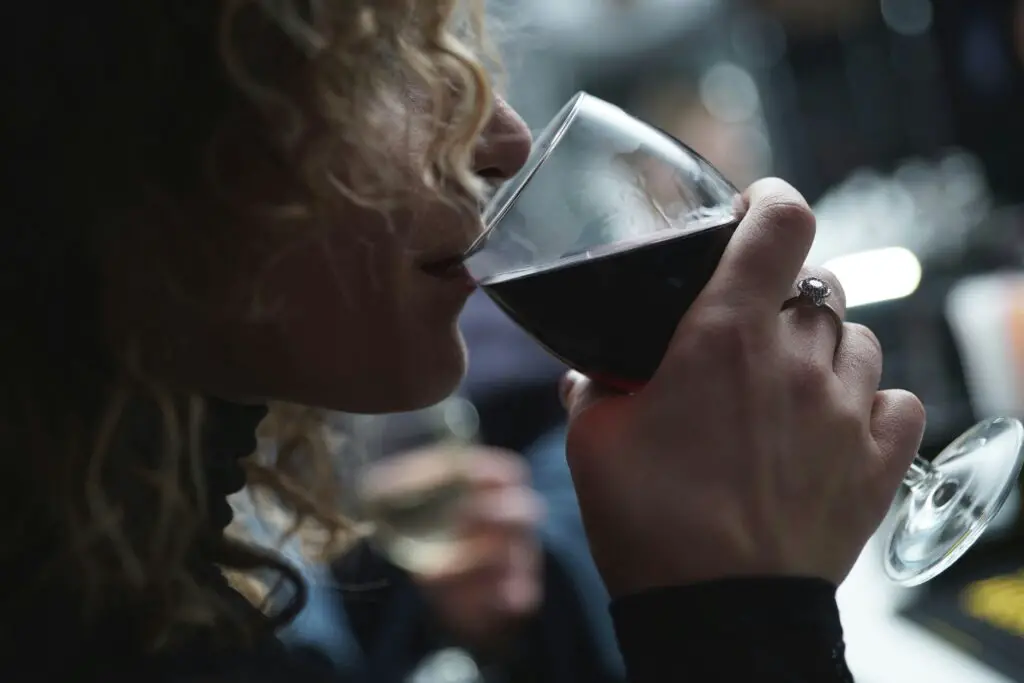When it comes to any alcoholic beverage, there’s always the risk, or potentially the intention, of getting intoxicated. Although wine isn’t viewed as a drink that’s heavy in alcohol, it is quite easy to get drunk from wine if you aren’t careful about your consumption. It’s important to understand the alcohol levels in wine to ensure you’re drinking safely. Keeping track of the alcohol levels in wine can be difficult since different types of wine can vary in the amount of pure alcohol in each bottle. This variance in alcohol levels can be dictated by the type of wine and each bottle’s specific alcohol per volume. In this article, we’ll be diving into what it means to be wine drunk and the different types of wines and their alcohol levels. Additionally, we’ll provide guidance on how to drink safely and avoid various negative side effects.

What is Wine Drunk?
The term “Wine Drunk” specifically refers to a feeling of drunkenness obtained specifically from drinking wine. Many argue that being wine drunk is different from being drunk as a result of other alcoholic beverages. For example, it’s most often described as producing feelings of warmness, coziness, and friendliness. Others say wine drunk makes them feel relaxed without being drowsy, as opposed to other alcoholic beverages that do make individuals tired or sleepy. This has led to a growing theory that wine has less negative effects caused by intoxication than other alcoholic beverages would.
Nevertheless, the validity of the ‘wine drunk’ phenomenon is still up in the air. There remains no scientific evidence to support the idea that wine produces a different kind of drunkenness than other alcoholic beverages. Rather, your level of drunkenness depends more on the beverage’s specific alcohol level, how much alcohol is being consumed, and at what rate the alcohol is being consumed. Compared to other drinks, Wine is typically drunk gradually, which may be the actual cause of believing that ‘wine drunk’ causes different feelings or behaviors.
Alcohol Levels In Wine
The alcohol level in wine depends on the specific type. Some types are lighter in alcohol content than others, such as Alsace Blanc, Muscadet, or Pinot Grigio. On the other hand, Zinfandel, Sherry, and fortified wines are some of the highest in alcohol level. Many types of wine will fall somewhere in between.
Even the highest alcohol level wines pale in comparison to hard alcohols on the market like tequila, vodka, or whiskey. This is why wine is not typically the go-to drink if the goal is intoxication. Despite this, wine, or any alcoholic beverage for that matter, should be drunk in moderation.
How Much Wine To Get Drunk?
If you’re curious about what amount of wine causes drunkenness, you’re in luck. We’ll be diving into the alcohol content of three major types of wine to find out how many glasses of wine it takes to cause intoxication.
The metric alcohol by volume or ABV, is used to quantify the amount of alcohol in a beverage serving. It is not exclusive to wine, and can be used to figure out the alcohol content of any alcoholic beverage. This measurement can determine what amount of an alcoholic beverage is purely alcohol. Each beverage will have its own unique ABV, but the type of alcohol can dictate an average spectrum of a drink’s ABV.
To get the most concrete answer, you’ll need to check the labels of the wines you have or plan on purchasing, as they will list a specific ABV percentage.

How Much White Wine To Get Drunk?
Individuals at 250 pounds or under will likely feel drunk with 2-3 glasses of white wine on average, but it will depend on the type of white wine. Most white wines will range anywhere from 5% to 15% ABV. Muscadet is a type of white wine that tends to be on the lower end of this range, while Fortified Spanish Sherry is on the higher end. In the middle of this range you’ll find drinks like Australian Chardonnay and Bordeaux. The overall average for white wine is 10% ABV.
How Much Red Wine To Get Drunk?
On average, 2 glasses of red wine is enough to get any person 250 pounds or lighter to feel drunk. Again, it will depend on the type of red wine. Red wine often has a higher alcohol content than white wine. Regardless, they stay in a similar range of ABV as white with 12% to 15%, with an overall average of 13.5%. On the lower end are wines like Lambrusco or Brachetto d’Acqui, while Zinfandel and Madeira sit on the highest end. In the middle range are red wines like Beaujolais and Barbera.
How Much Champagne To Get Drunk?
3 glasses of Champagne should be enough to get an adult drunk, but it will depend on other factors such as tolerance and weight. A champagne bottle will have anywhere between 11-13% ABV on average. Other sparkling wines will have vastly different ABV levels as they are different from champagne.

How Often Can You Safely Drink Wine?
Although wine is usually not very strong when it comes to alcohol levels, it is still imperative that it be drunk mindfully and moderately. The amount of wine one can handle will depend on the person, but it’s largely determined by weight. The general recommendation is, at most, 1 drink a day for women and 2 drinks a day for men. Since men tend to be heavier on average, they are usually able to consume more without being heavily affected.
It’s most healthy to consume alcohol occasionally, or not at all, rather than routinely to avoid any health risks caused by consistent alcohol consumption. Alcohol is known to cause heart issues and different types of cancers. Check out our article “Is Wine Good For You?” to learn more about the health benefits and health issues associated with all types of wine.
Being mindful about your drinking habits can help you stay safe and comfortable whether it be in a social environment or casual solo drinking. As much as we all love to explore different wine types, whether that be white or red wine, be aware of what your limits are before partaking too heavily. Best practice for knowing a wine’s alcohol level is reading the label of your wine bottles, which will list the specific alcohol percentage.
To living a full-bodied life,
Wesley

